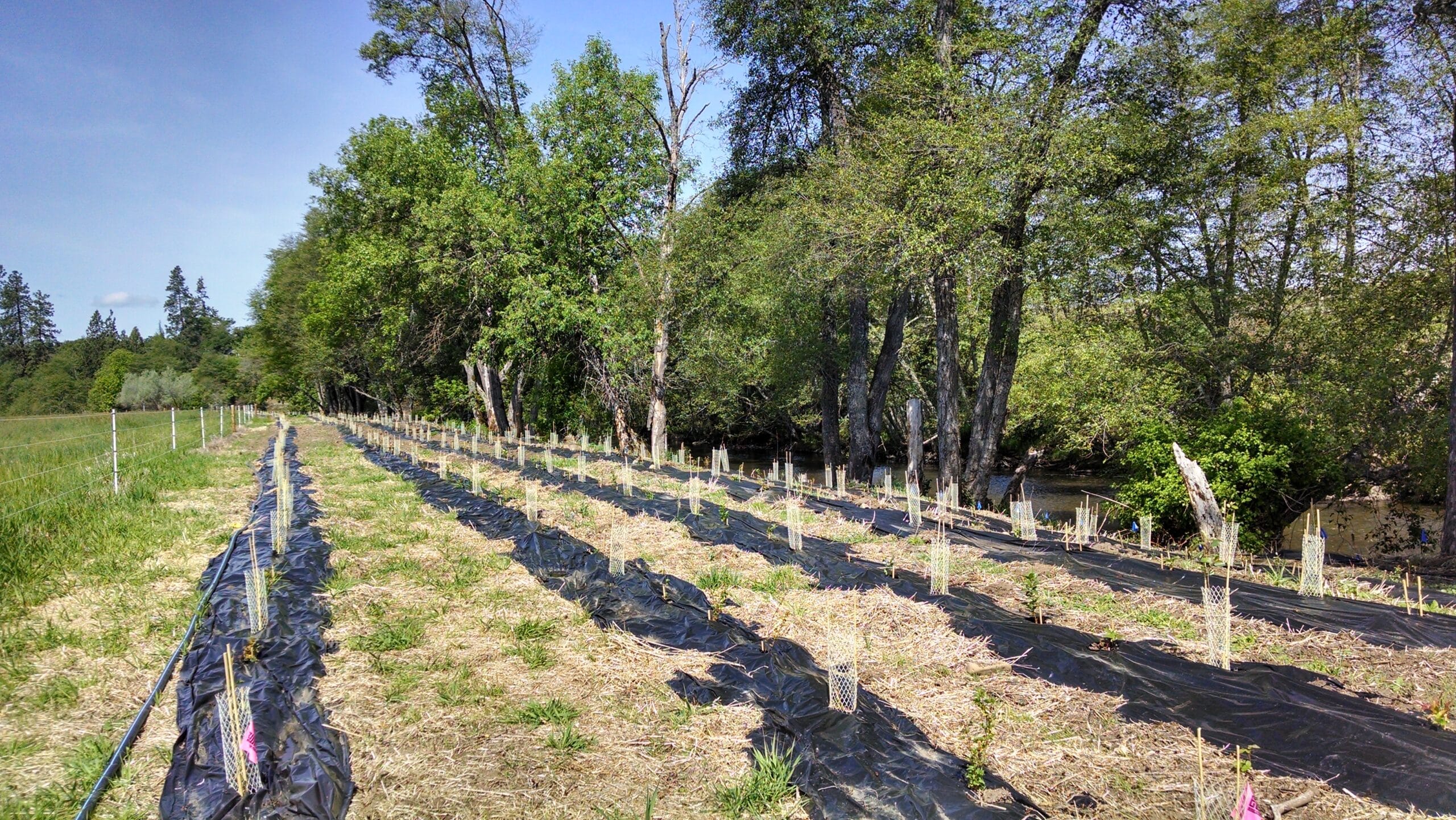TFT identifies opportunities to reduce erosion in southern Oregon
August 22, 2017

ASHLAND, OREGON — The Freshwater Trust (TFT) is using satellite imagery, science-based modeling, and publicly available data to identify sites where restoration will reduce erosion into southern Oregon’s Little Butte Creek.
The Drinking Water Providers Partnership is a collective of nonprofits and federal and state agencies in Oregon and Washington. The Partnership has awarded TFT a $20,000 grant to do the assessment with important matching contributions from the Medford Water Commission and Rogue Basin Partnership. Watershed restoration is viewed as an effective way to support clean, inexpensive drinking water, while also providing important habitat for native fish.
Little Butte Creek is a 17-mile tributary of the Rogue River. Much of the land in the watershed is used for raising cattle. Livestock operations can pose threats to water quality where best management practices (BMPs) are not implemented. The Little Butte flows into the Rogue approximately one mile from where the Medford Water Commission withdraws the region’s drinking water for the months of April through September.
“More than $5.6 billion is needed in drinking water infrastructure repairs and improvements in Oregon over the next 20 years as we make room for another one to two million residents – all of whom will need clean water,” said Cathy Kellon, Working Waters Program Director with the Geos Institute, an Ashland-based climate science agency and member of the Drinking Water Providers Partnership. “The Partnership’s work is a critical starting point because safe drinking water starts upstream.”
TFT works with landowners throughout Oregon to build fences and install off-channel watering systems to keep cattle away from the banks of rivers and creeks. This reduces riparian disturbance and facilitates the recovery of riparian forest, which reduces the amount of sediment and nutrients making their way into the water. At the end of this project, TFT will have created an interactive, user-friendly map of the Little Butte watershed that clearly identifies where agricultural BMPs such as installing a riparian livestock exclusion fence will have the greatest impacts on water quality.
“In terms of benefits to the watershed, some projects just offer more ‘bang for the buck,’” said Denis Reich, southern Oregon programs director with TFT. “We are creating a plan so that we and our partners know exactly where to focus our energies and partner with landowners in this watershed. By strategically developing these tools, we’re helping maximize the improvements to water quality from future restoration efforts in Little Butte.”
TFT has planted more than 50,000 native trees and plants along the Rogue River and its tributaries since 2012. The plantings are designed to provide shade, improving habitat for native fish and offsetting the warm, but clean, water discharged into the river by the Medford wastewater treatment plant.
Similar to the tools, technologies and modeling used to determine where to plant trees for shade, this effort will help TFT and its Rogue partners identify where restoration can reduce erosion in the Little Butte watershed.
“TFT’s science-based and targeted approach is important for making an appreciable difference in stream health while also making limited conservation funds go farther,” said Kellon. “As time goes on, we’re only going to be asking more and more from our rivers. If we want to improve water quality sooner than later, it’s critical that we focus our on-the-ground efforts where there’s the greatest likelihood of having a positive impact.”
In addition to planting streamside vegetation, TFT has built more than 130 large wood structures in key reaches of the Rogue River. Deep pools created in and around the logs serve as critical spawning habitat and valuable refuge for the Chinook, coho, steelhead, cutthroat and sturgeon that call it home.
“The Rogue supports a vibrant fishery and economy, world-renowned recreation opportunities and a public drinking water supply,” said Reich. “The Freshwater Trust has a good handle on what threatens these resources and works collaboratively and strategically with the community to address them.
#Rogue River
